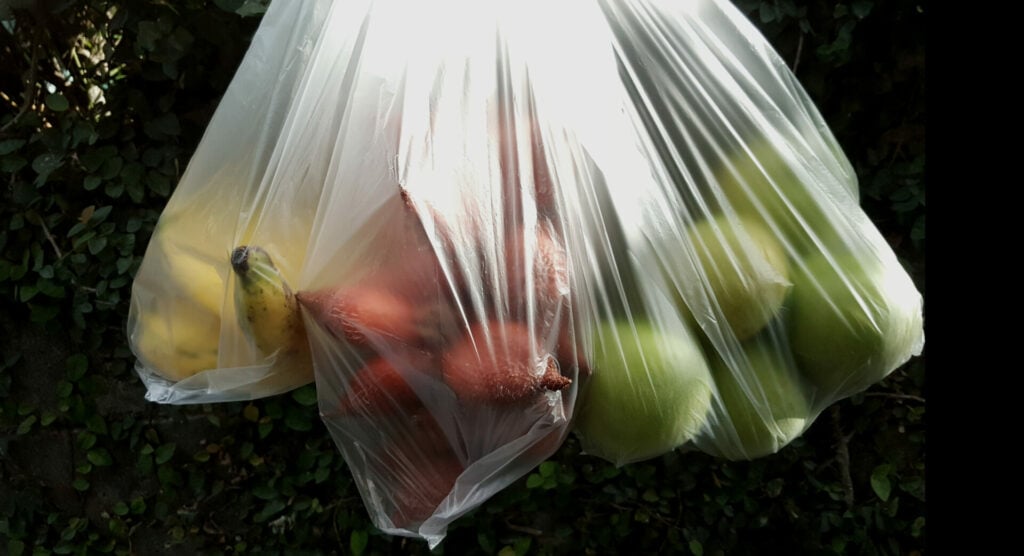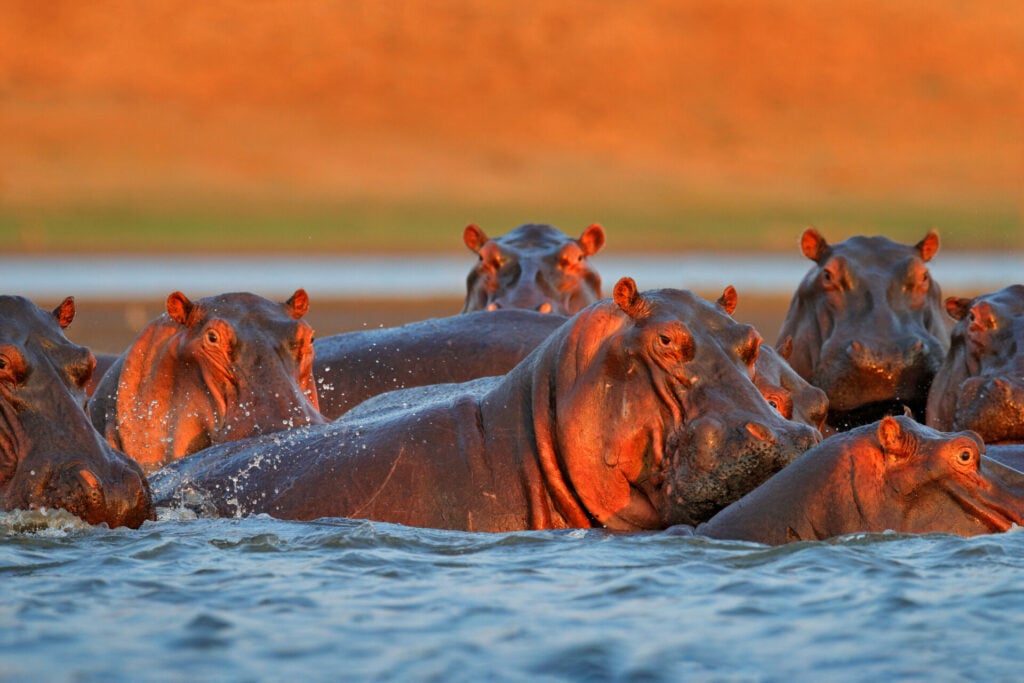As our global population grows, so does our appetite for seafood. People are eating more of it than ever with global per capita consumption nearly doubling in the last 50 years. The ocean, once thought to be an inexhaustible food source, now faces unprecedented challenges from overfishing, pollution and habitat destruction. In the midst of this crisis, the concept of sustainable seafood has emerged as a potential solution – but is it truly achievable?
Fish and seafood accounts for just 2 percent of the calories we as humans consume, yet a terrifying 92.7 percent of global wild fish stocks are overfished or being fully exploited. This figure includes 33 percent of fish stocks that are overfished and just over 59 percent that are fully exploited.
Industrial fishing practices have a significant impact on the health and biodiversity of our oceans. According to Science Magazine, industrial fishing fleets are responsible for approximately 79 per cent of the world’s total catch, exerting immense pressure on marine ecosystems.
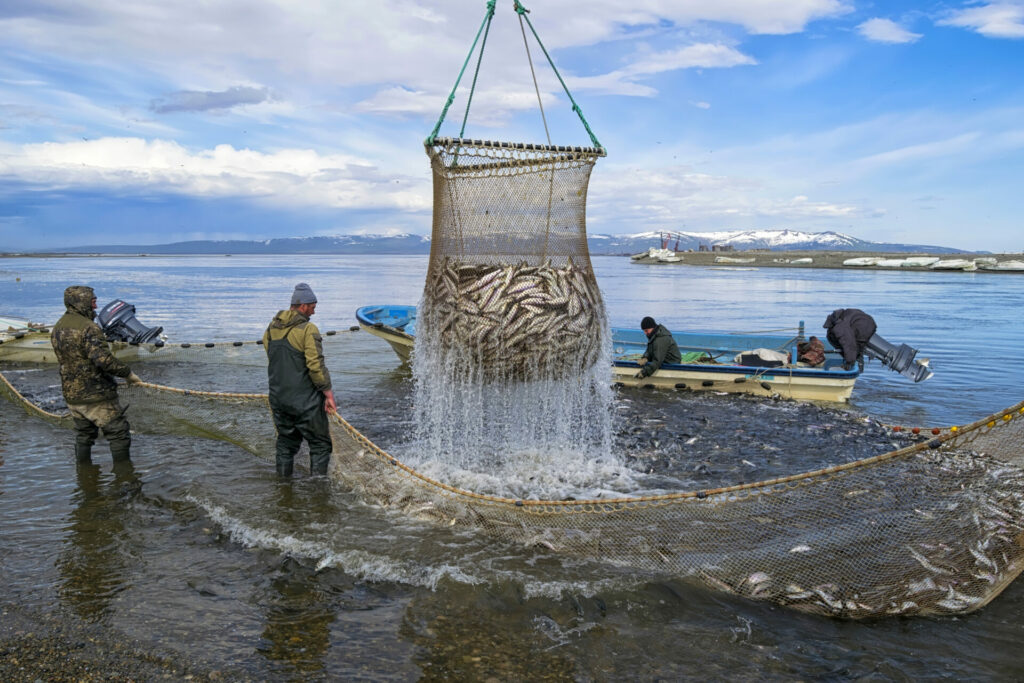
Exacerbating this issue is the problem of bycatch, the unintentional capture of non-targetted species. According to the World Wildlife Fund, around 40 per of global seafood catch is discarded due to being unwanted or unmarketable. That includes 300,000 small whales and dolphins and 250,000 endangered loggerhead and critically endangered leatherback turtles every year.
This, of course, is before you even get to the issue of plastic pollution. There is an estimated 11 million tonnes of plastic entering our ocean each year, and 1.5m tonnes of microplastics in our seas. By 2040, it is thought that 29 million metric tonnes of plastic will have entered the ocean annually. These stark figures are indicative of the crisis facing not only our oceans, but the marine species who call our seas home, some of whom are being driven to extinction.
The Blue Revolution
Just as land-based agriculture is undergoing a transformation to address its environmental impact so too must the seafood industry. Many experts recognise that current seafood practices need an overhaul to sustainably meet the growing demand for seafood.
‘Seafood is a unique category in our food systems,’ Sheikh Fahim Al Qasimi, founder of sustainable seafood company Seafood Souq tells The Ethicalist. ‘Most importantly, wild caught seafood – that accounts for approximately 50 per cent of total production – is the only food source that we extract from the ocean, more like mining than farming. Sustainably managing our shared ocean resources requires a concerted effort from governments, fisheries, the seafood industry and consumers.’
Without it, we will continue to over-exploit and over fish the ocean. It is not only a food security issue, but environmental as the health of our ocean and its biodiversity is key to the health of the planet,’ he adds.
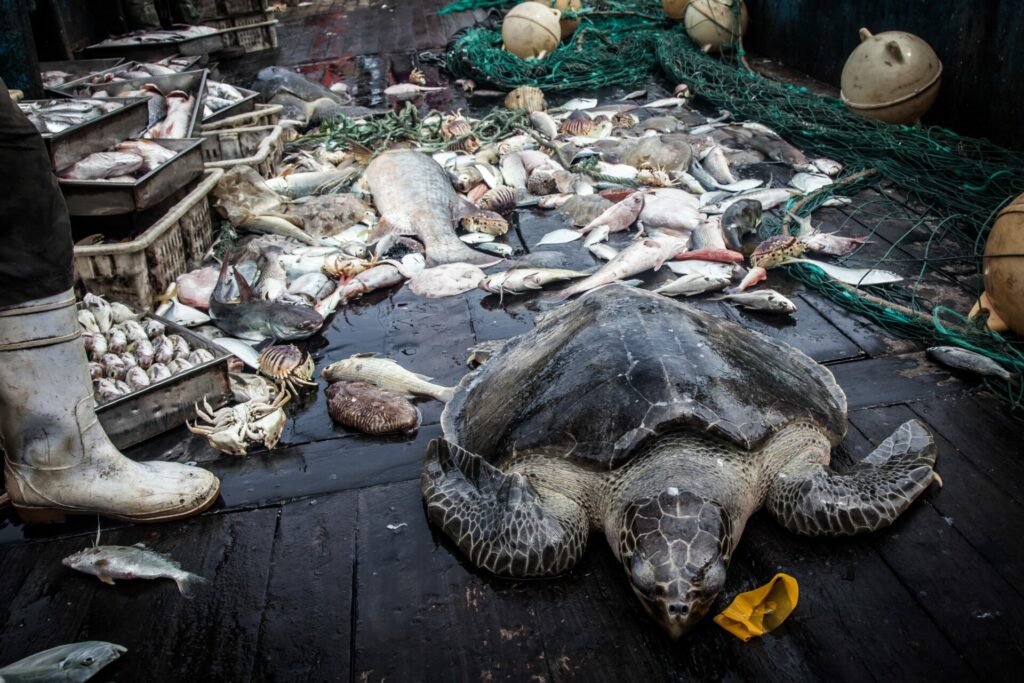
And consumers are also getting on board. A recent study by the Marine Conservation Society found that 43 percent of consumers prioritise sustainability – yet 24 percent find the process too complicated. Suggesting that the appetite is there for a more sustainable seafood sector.
To address this shift, the so-called ‘Blue Revolution’ – a framework with a set of goals for transforming the seafood industry – aims to balance global demand with responsible fishing practices, environmentally friendly aquaculture, and strengthened fisheries management.
One crucial strategy for protecting vulnerable seafood species is to improve fisheries management, particularly via the establishment of marine protected areas (MPA’s). As of 2021, there were just over 5000 MPAs in the world, covering roughly 8 percent of the world’s ocean. According to the World Wildlife Fund (WWF), if MPAs are effectively managed, they have been shown to increase fish biomass by an average of 446 percent. By creating more protected locations, enforcing catch limits and reducing bycatch, the urgently needed long-term health of fish stocks, can be met.
In addition to MPAs and responsible fishing practices, sustainable aquaculture is essential to sustainably meet the growing global demand for seafood. There’s a need to invest in aquaculture that not only reduces the destruction of sensitive habitats for farms, including mangroves or seagrass beds, but also reduces water, chemical and plastic pollution.
In the UK Offshore Shellfish is building the country’s largest rope cultured mussel farm, using specially designed technology to create what will be the largest farm of its kind in European waters. Sustainability is at the core of it mission to produce high quality seafood. Once fully developed, its three sites will cover a total area of 15.4 sq km and produce around 10,000 tonnes per year.
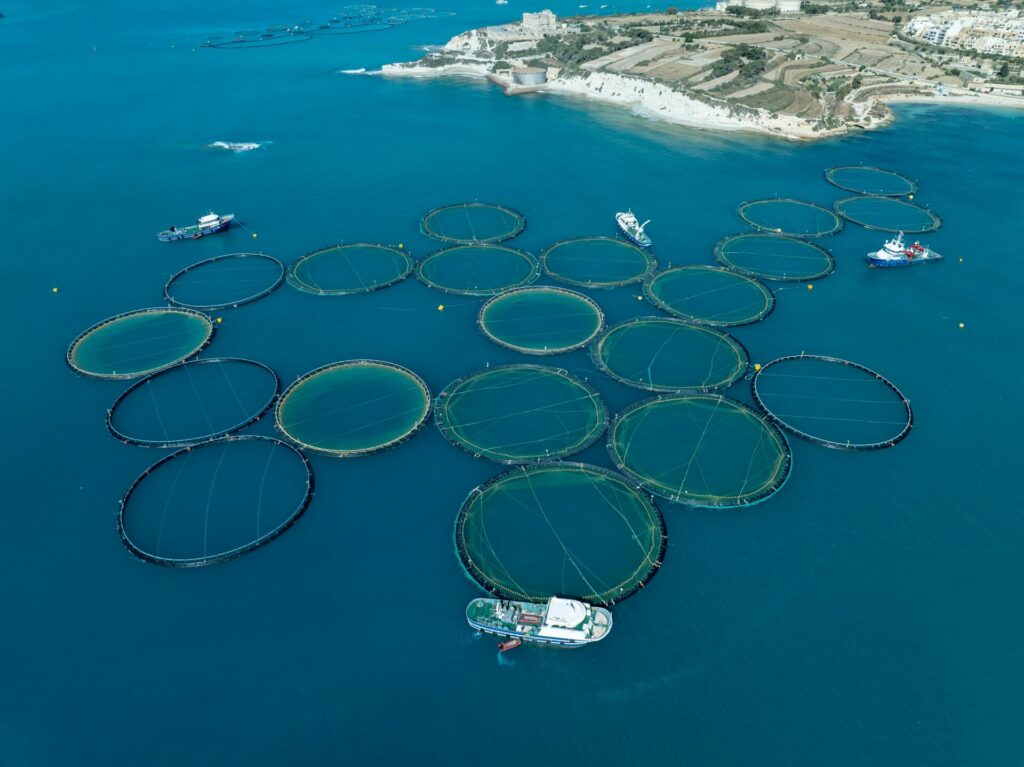
Sustainable Solutions
Technology is also playing an important role in creating a sustainable seafood industry.
In the UAE, Seafood Souq is addressing this via a digital ecosystem for the global seafood market, offering a platform for seafood suppliers and buyers to connect, trade, and trace products with transparency.
‘Our traceability technology, SFS Trace, is centred around trust and transparency,’ explains founder Sheikh Fahim. ‘We have built a suite of digital tools for different actors in the seafood industry to ensure transparent communication of the source, species and sale of seafood across the globe. The enforcement of fishing quotas and seasonal restrictions by tracking catches ensures sustainable practices, preventing overfishing and allowing fish populations to replenish.’
‘Fisheries in South Africa use our digital logbook to record catch and transparently share it with governments and buyers. We also built an audit system and impact dashboard for buyers of seafood – hotels and supermarkets – to assess and improve the traceability of their seafood sourcing. We are working with 111 Management, implementing traceability audits for their high-end restaurants, achieving 100 per cent traceability.
‘We cannot improve what we cannot measure, so we continue to build tools for producers and consumers to assess and improve their seafood choices,’ he adds.
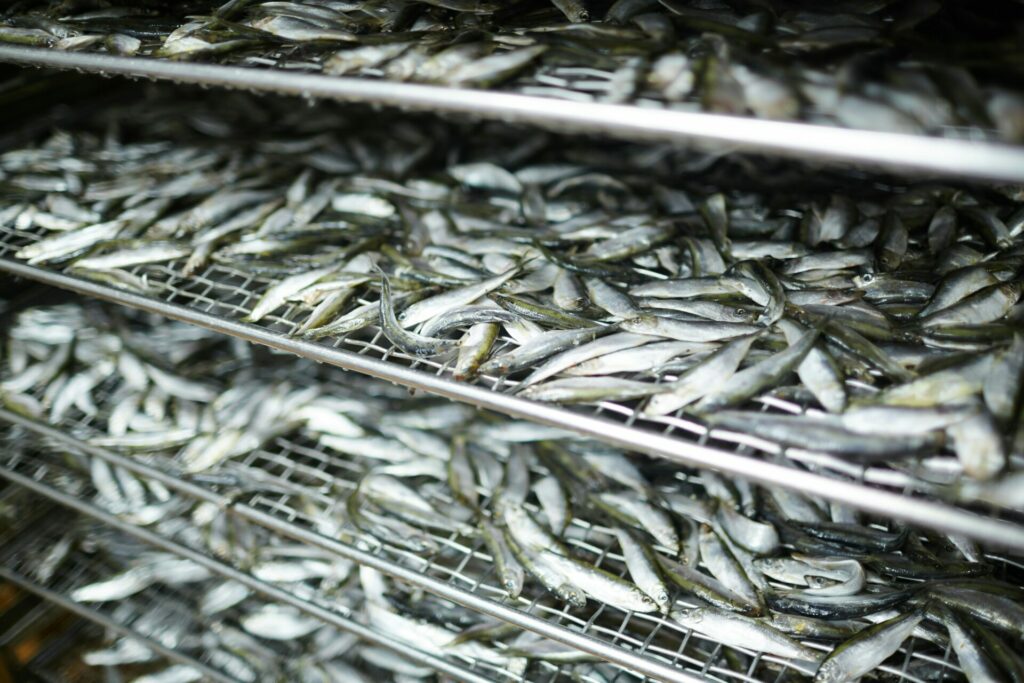
Elsewhere, companies such as Provenance and Fishcoin for example, are using blockchain technology to create transparent supply chain records for seafood products. This allows consumers to trace the origin and journey of their seafood, ensuring it comes from sustainable sources and is not associated with illegal fishing.
AI-powered systems like Global Fishing Watch are also using satellite data and machine learning algorithms to monitor fishing activity worldwide, detecting illegal fishing patterns, and supporting law enforcement efforts. Researchers estimate that at least 1 in 5 fish globally are caught illegally, with a total cost to coastal nations between U.S. $10 billion and $23 billion a year. Its hoped advancements in technology can help stamp this out and protect vulnerable marine habitats.
Seafood fraud – where a cheaper or more common species is mislabeled as a more expensive or desirable species – is a widespread problem in the seafood industry. DNA testing and smart tagging technologies are being used to combat seafood fraud and monitor fishing activity. For example, FishID uses DNA barcoding to identify fish species. By extracting and analysing a small sample of DNA from seafood, scientists can determine the species and detect any mislabeling, ensuring transparency.
Plant-based Seafood
While changes in fish farming and aquaculture are key, so too is innovation. In the same way that plant-based options are booming as alternatives to meat, forward-looking enterprises are exploring how they can replicate some of our favourite seafood.
We’re expecting global demand for seafood to more than double in the next 25 years. So if we want to contribute and meet climate targets, it’s really clear that we need to at least offload some of this demand to alternatives.
Zac Austin, CEO and co-founder of Pacifico Biolabs
From currently available fish products made from rehydrated wheat protein, to patent-pending creations including plant-based shrimp, or seafood products made from mushroom protein and micro-algae, the guilt-free possibilities seem endless.
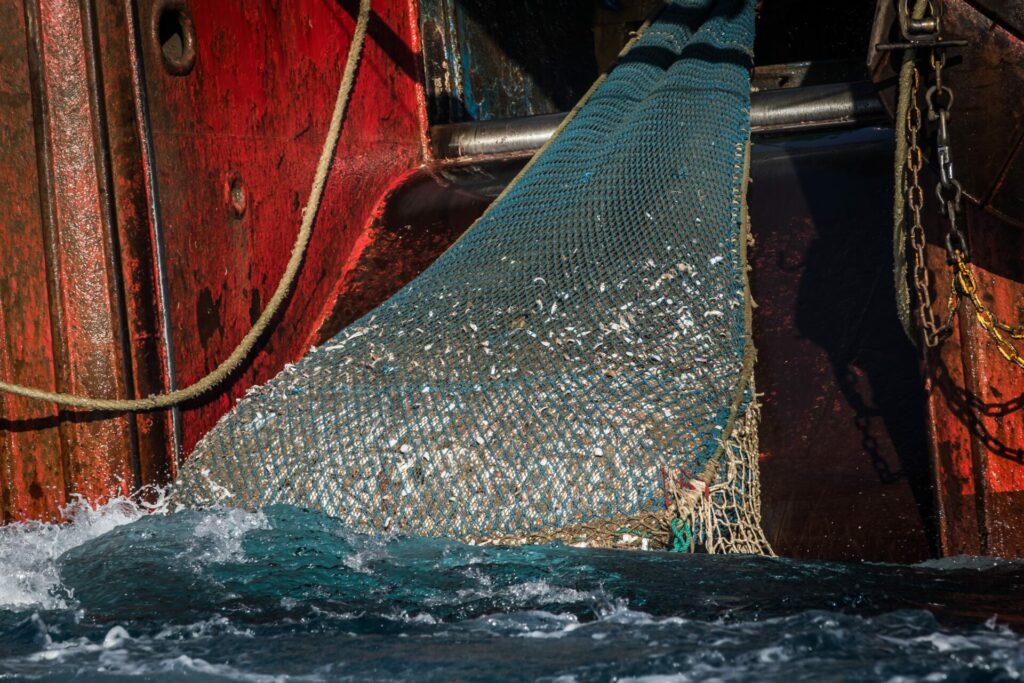
Ask any of the people behind these startups, and they have a long list of reasons for why plant-based is the way forward.
‘If we look purely at CO2 emissions, there is a contribution coming from fishing and agriculture,’ says Zac Austin, CEO and co-founder of Pacifico Biolabs, which is developing alternatives using mycelium and microalgae.
‘On the other side, we’re expecting global demand for seafood to more than double in the next 25 years. So if we want to contribute and meet climate targets, it’s really clear that we need to at least offload some of this demand to alternatives. What we’re doing is fundamentally reassessing what we can use as the building blocks to create the alternative products of tomorrow.’
‘The plant-based dairy market is incredibly mature, plant-based meat is following that, and fish and shellfish have huge potential. But yet, we’ve only scratched the surface’
Frankie Fox, co-Founder Food Squared
For Frankie Fox, co-Founder of Food Squared, which is developing a plant-based shrimp product, the benefits not only include a lower carbon impact – six times lower than eating traditional farmed shrimp – but also, perhaps surprisingly, superior levels of protein and nutrients. All at the same cost.
In her view, there’s an appetite for these innovative products: ‘The basic fact is, demand is outstripping supply and alternative proteins, as well as protein diversification, has huge potential to bridge that gap. The plant-based dairy market is incredibly mature, plant-based meat is following that, and fish and shellfish have huge potential. But yet we’ve only scratched the surface.’
Scratching the surface may be just the beginning for plant-based seafood but as the future of our oceans and seafood supply hangs in the balance, embracing sustainable innovations like plant-based seafood alternatives is no longer a choice, it’s a necessity.




